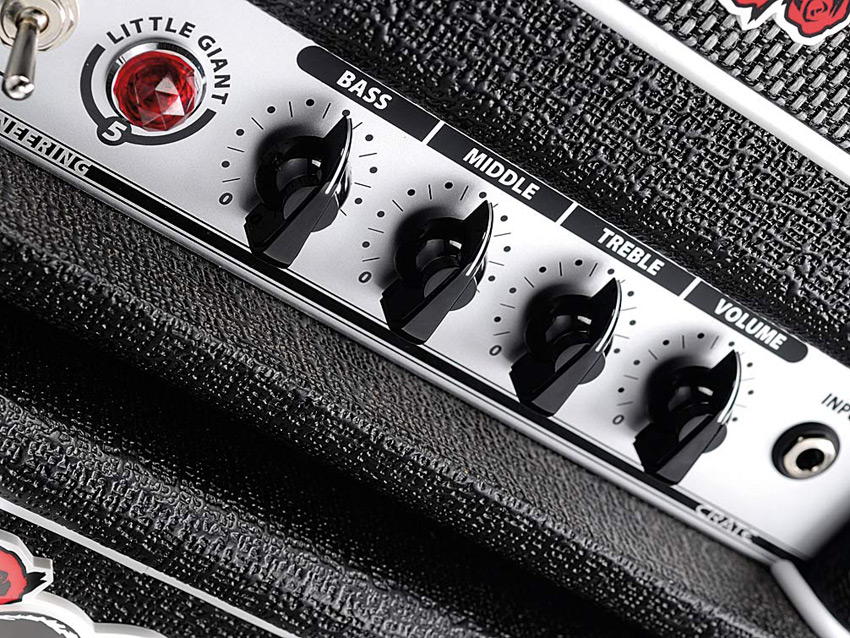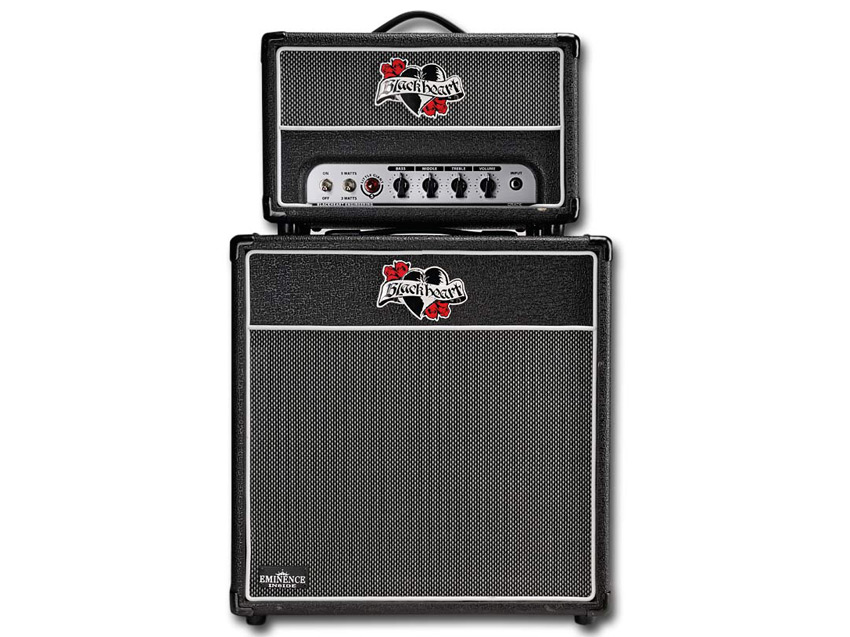MusicRadar Verdict
With tonal quality that belies the price, this is a useful addition to your studio set-up.
Pros
- +
Superb value. Compact size. Versatile range of tones. Flexible connectivity.
Cons
- -
Natural voicing may be too dark for some. No master volume, and five valve watts kicks out plenty of level.
MusicRadar's got your back

Blackheart Engineering BH5H Little Giant head

Blackheart Engineering BH5H Little Giant head
Alongside artificially aged instruments, one of the biggest trends in the guitar industry in recent years has been low-wattage valve amplification. With more and more live venues equipped with high quality PA systems, there's precious little need for a 100-watt stack these days unless you are playing stadium gigs.
Meanwhile, no longer limited to scratchy cassette-based multitrack recorders, home recording now presents a viable alternative to commercial studios. As a result, many players want the sound quality and dynamic response of a good valve amp without the neighbour-bothering volume levels of old.
Manufactured by Crate in China, the Little Giant is an all-valve affair with solid-state rectification. Other than the love-it-or-hate-it plastic Blackheart logo, aesthetically the chicken head knobs, red jewel power indicator, black vinyl and Marshall-style 'salt and pepper' cloth add up to a pretty classic looking package.
Despite the low price point, the 16-gauge (1.5mm) steel chassis is housed in a 18mm ply head rather than chipboard. Internally, the single PCB is neat and tidy, as it should be with such a simple circuit.
Flexibility is aided by five external speaker outputs. A pair of four-ohm, a pair of eight-ohm and a single 16-ohm output should cater for almost any combination of cabinets you need to hook up.
Other than a simple three-band EQ section and a volume control, the front panel's main point of interest is the pentode/triode switch. The chunky, hard-wearing toggle switch flips between five- and three-watt operation.
The manual states: "The Pentode is the aggressive setting that gives you full output power of five watts RMS. The Triode is gentler with more head room that reduces the output power to three watts RMS."
Want all the hottest music and gear news, reviews, deals, features and more, direct to your inbox? Sign up here.
"As long as you can accommodate the volume of the driven sounds via some sort of power attenuator, an isolation cabinet or very tolerant neighbours, there are sonic thrills to be had."
Before firing up the Little Giant it's worth re-emphasising that, while low-powered valve amps are fantastic recording tools, in order to get much drive out of a non-master volume head such as this (on either the three- or five-watt setting), you will still need to turn it up to volume levels that are way beyond acceptable in anything other than a soundproof studio or detached house.
Sounds
Click here to hear the Little Giant in action.
As the much-debated relationship between wattage and volume is a non-linear one, don't expect a dramatic difference in level between pentode and triode mode. As noted in the manual, it's more of a feel and headroom shift.
Using the cab it's surprising how much bottom end this mini-stack kicks out, and proceedings can get pretty swampy with mahogany and humbuckers in the equation. As a starting point for clean and overdriven voices, the best way to set the EQ seems to be to leave the mids around 12 o' clock, with the bass rolled back a couple of notches and the treble boosted slightly.
With the volume around half-way on either setting, the Little Giant delivers a responsive clean sound with a hint of grit as you dig in. It's very transparent and revealing, with the EL84 contributing to a glassiness - especially in combination with single-coils - that is more British than American in tonality.
As you rev up the volume, natural overdrive enters the equation and the amp's voicing hovers somewhere over the mid-Atlantic. Bridge pickup settings are as AC/DC as they are ZZ Top, with plenty of rasp.
Flip to the neck pickup and, especially if it's a single-coil, there's a Texas vibe for bluesy lead or gritty slide. With the volume cranked up and a neck humbucker selected there's a nice flabby grunge rhythm tone, but that's as heavy as you are going to get without throwing an overdrive or distortion box into the mix.
At this price, it's difficult not to recommend the Little Giant. As long as you can accommodate the volume of the driven sounds via some sort of power attenuator, an isolation cabinet or very tolerant neighbours, there are sonic thrills to be had. A version with built-in attenuation or a master volume would really be something…
Chris Vinnicombe worked with us here on the MusicRadar team from the site's initial launch way back in 2007, and also contributed to Guitarist magazine as Features Editor until 2014, as well as Total Guitar magazine, amongst others. These days he can be found at Gibson Guitars, where he is editor-in-chief.